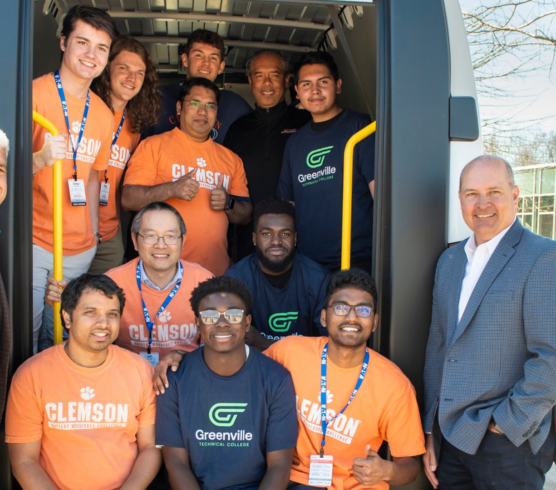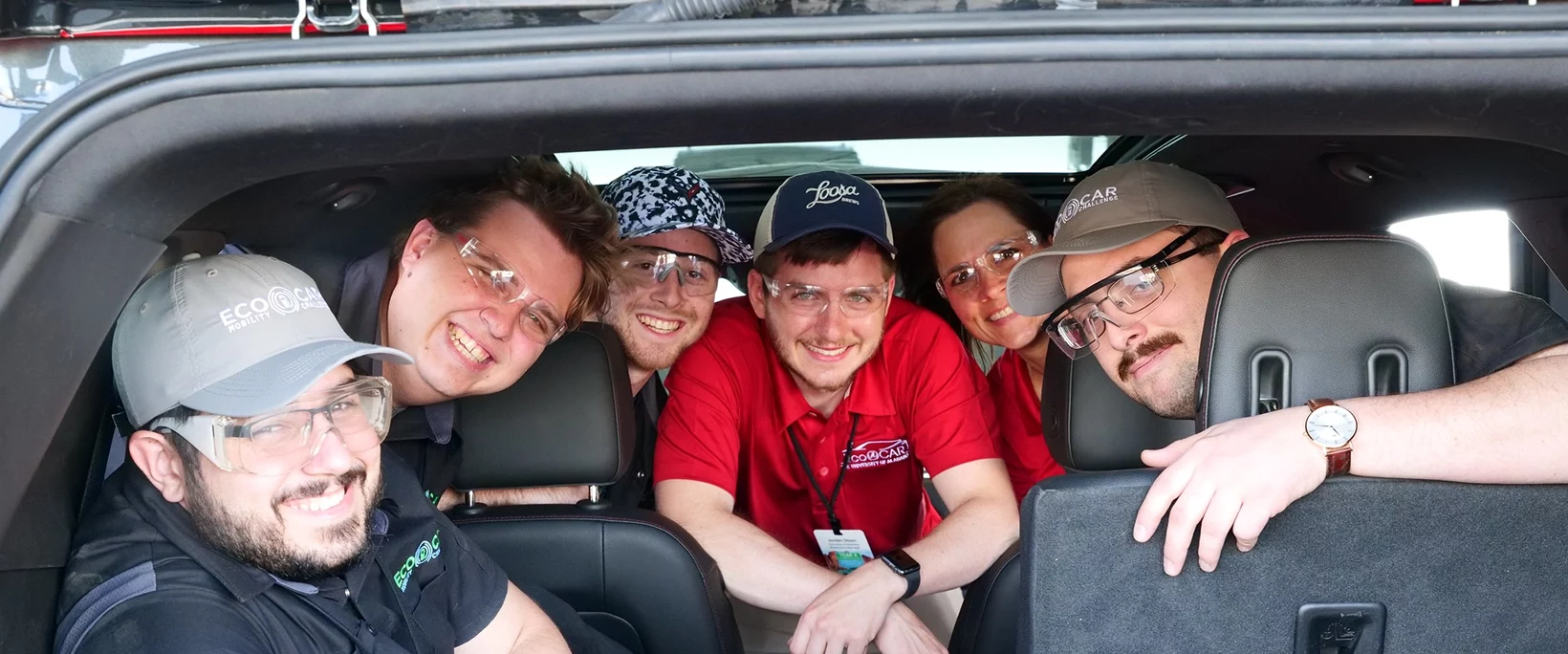This post is written by Dave Shirley and Rich Maltzman of EarthPM.
The key word from the Kickoff Workshop session for EcoCAR 3? It’s UP.
- Starting up: we talked about initiation, getting the project’s stakeholders identified, the team motivated, and the broad-brush scope figured out.
- Looking up: creating and connecting the team’s work to a mission statement and vision to which team members can align and feel good about
- Divvying up: negotiating and arranging solutions that benefit both parties in a conflicting situation (see the photo of the intensity at one of our negotiation exercises!)
- Staffing up: understanding the personality types that can be involved and how understanding ourselves and others is key to solid and meaningful communications
- Stepping up: buying into the idea that project managers are change leaders and need to “carry the torch” for the project’s mission and vision
- Goofing up: knowing that we will make mistakes and learn from them as we “progressively elaborate” the project through all of its phases
The word UP also applies to not only our mission but another mission that had a major milestone just last week – MAVEN. If you’re unfamiliar with MAVEN, we’re here to make you a “maven” on it. According to NASA, Mars Atmosphere and Volatile EvolutioN (MAVEN) mission is part of NASA’s Mars Scout program, funded by NASA Headquarters. Launched in Nov. 2013, the mission will explore the Red Planet’s upper atmosphere, ionosphere and interactions with the sun and solar wind. Scientists will use MAVEN data to determine the role that loss of volatiles from the Mars atmosphere to space has played through time, giving insight into the history of Mars’ atmosphere and climate, liquid water, and planetary habitability.
EcoCAR 3 students during an intense negotiation exercise at the Kickoff WorkshopOn Sunday, September 21st at about 10:30 PM, MAVEN successfully went into orbit around Mars. How does this relate to our project? It’s about collecting facts on Mars’ climate and it’s geared to help understand what happened there which may help us understand Earth’s climate and possible changes we face. It’s about understanding the mechanics of the situation and making intelligent analogies. So it’s at the intersection of sustainability and project management, just like EarthPM. So here’s another UP example – way, way UP! You can read more about this connection on EarthPM’s ProjectsAtWork channel.
In our next session we will shift the focus from up to down – it is “Fall”, after all – to concentrate on such project planning activities as the work breakdown structure, risk identification, and the advance planning we need to prevent communications breakdowns. So we will see you down in Columbus, Ohio and are looking forward all of the ups and downs!



